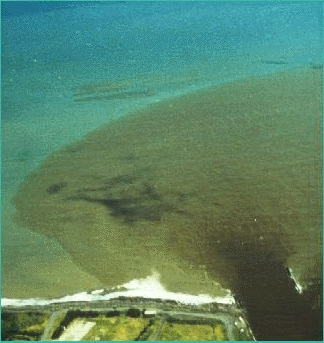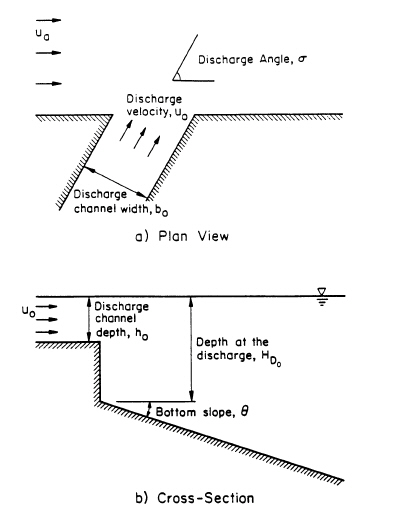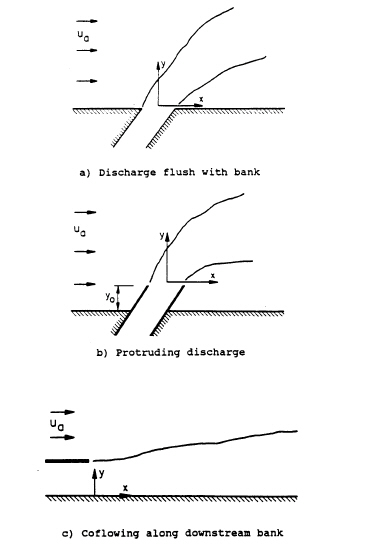CORMIX3 analyzes surface, shoreline discharges that result when an effluent enters a larger water body laterally, through a canal, channel, or
near-surface pipe or channel.
In contrast to CORMIX1 and CORMIX2, it is limited to positively or neutrally buoyant effluents.
Negatively buoyant surface discharges can be modeled with CORMIX - GTS.
Different surface discharge geometries and orientations can be analyzed including flush or protruding channel mouths, and orientations normal, oblique, or parallel to the bank.
Source Characterization Assumptions
- All subsystems require that the actual cross-section of the water body be described or schematized as a rectangular straight uniform channel that may be bounded laterally or unbounded. The ambient velocity is assumed to be uniform within that cross-section.
- CORMIX3 assumes a uniform ambient density profile.
- All CORMIX subsystems are in principle steady-state models, however new developments allow the analysis of unsteady mixing in tidal environments.
- All CORMIX systems can predict mixing for both conservative and non-conservative first-order decay processes, and can simulate heat transfer from thermal plumes.
CORMIX3 Discharge Types
Surface, shorline discharge structures (pipe or channel) within CORMIX3 can be specified as:
- (a) Flush with the bank/shore
- (b) Protruding from the bank
- (c) Co-flowing along the bank
CORMIX3 uses the variable "HD0" for the actual water depth just in front of the channel exit and requires an additional specification for the receiving water bottom slope, again in front of the exit, extending into the receiving water body. These details are important for identifying cases where plume attachment to the bottom can occur.
In the case of a circular pipe discharge CORMIX3 assumes the outlet is flowing full and that it is not submerged under the water surface by more than ½ of the outlet diameter. If the discharge outlet has an odd cross-sectional shape (e.g. a pipe flowing partially full) then it should be represented schematically as a rectangular outlet of the same cross-sectional area and similar channel depth.
For open channel discharges, considerable care should be exercised when specifying discharge channel depth since this parameter is directly linked to the ambient receiving water depth (stage). This is especially important for tidal situations.
To prevent an inappropriate system application, CORMIX3 only allows for a discharge channel depth-to-width aspect ratio of 0.05 to 5. This prohibits the use of extremely oblong discharge geometry.




